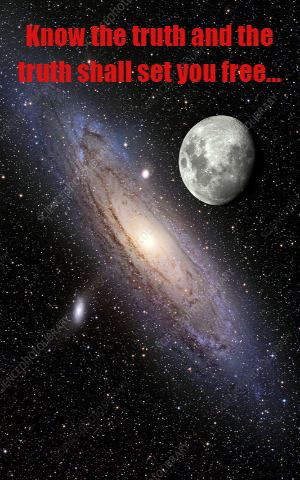GOD Is Searching For You.
GOD Is Searching For You.


We are living in an age of scientific progress. In our generation, we have seen man achieve some things that our forefathers considered impossible. The pace at which science is progressing is perpetually accelerating. It has been estimated that the entire scientific knowledge that man had acquired from the time of his creation to 1750 A.D. was doubled all of a sudden within a period of 150 years by 1900 A.D. The knowledge that was man’s by 1900 A.D. doubled again and this time in just 50 years – by 1950 A.D. This knowledge doubled again in just 10 years – by 1960. It has been estimated that man’s scientific knowledge has been doubling thereafter every two and half years. Take for instance the speed of travel, as one indication of scientific advance. 200 years ago man travelled on horseback just like his primitive ancestors did thousands of years earlier. But by 1900, man could travel by advanced means of locomotion at about 80 kilometres per hour and this was considered a very fast speed in those days. By 1945, jet planes had come into the air and man was travelling at 1000 kilometres per hour. Today, a man travels in space at over 40,000 kilometres per hour. We say that space has been conquered because man has reached the moon, but we must not forget that the moon is just on the fringe of space. Space itself is so vast that it staggers our imagination. Let’s have a look at the universe and at space! The average distance of the moon from the earth is about 400,000 kilometres. This is very small compared with the distance from the earth to the sun which is about 150 million kilometres. The distance of the sun looks quite considerable but is actually quite negligible when compared with the distance of the nearest star. When calculating distances to the stars, ordinary units of measurement will not do, for they lead us into fantastically large figures. Scientists and astronomers, therefore, use the “light year” as the unit of measurement– that is, the distance that light travels in one year. Remember that light travels about 300,000 kilometers (or 7 times around the earth) in one second. So the distance that it travels in one year comes to over 9000 billion kilometres.
Let us consider the distances to some of the stars. The nearest star visible to the naked eye is a star called “Alpha Centauri” – which is four and a half light-years away – that is, about 250,000 times the distance to the sun. This means that if you travelled at the speed of light, even though you would reach the moon in one and a half seconds and the sun in eight and a half minutes you would have to travel for four and a half years at that speed to reach “Alpha Centauri”. To get a better idea of what this means, consider a scale model of the universe where the earth is represented by a grain of sand and the sun by a marble, 3 feet away from the earth. All the planets of our solar system would then come within a radius of 100 feet from the sun. But the nearest star would be 150 miles away from the earth on that scale model of the universe. The farthest star visible to the naked eye is in the Andromeda Galaxy, which is more than 1.5 million light-years away. There are still more distant galaxies that are visible through telescopes, 6,500 million light-years away. Now, look at the sizes of some of the stars. They look so small that little children say “Twinkle, twinkle little star”. The earth looks pretty large! It takes us many hours to get from one place to another on this earth. But the sun is so large that 1 million spheres the size of the earth could fit into it if it were hollow. Yet even the sun is small compared to some stars. Some stars are so large that 500 million spheres the size of the sun could fit inside each of them if they were hollow. The star Betelgeuse, 520 light-years from the earth, is one of the bright stars of the Orion belt. Its diameter is 500 million kilometres – which means that if it were hollow, the earth could comfortably revolve around the sun, INSIDE THIS STAR, in its normal orbit! (The earth’s orbit around the sun being only 300 million kilometres in diameter). Now consider the number of stars. Our solar system is part of a galaxy called the “Milky Way”. Astronomers have estimated that there are at least 100,000 million stars in this galaxy. The sun is just one such star. And the Milky Way is just one galaxy among many. Astronomers tell us that there are at least 100 million galaxies in the part of space that telescopes can see. There are many more beyond. Consider too the perfect precision with which these heavenly bodies move in their orbits. The best man-made watch is not more precise than the stars in the heavens. Surely there must be a Supreme Intelligence behind this universe, that created and planned each star and planet. How vast is space! How small is the man! One of the writers in the Bible wrote this, “When I look up into the night skies and see the stars, I can’t understand oh God why you should pay any attention to puny man”. Yet, God the creator of this universe cares for each of us. This is the marvellous truth we learn in the Bible. The value of any article is not determined by its size. A millionaire may own acres of land. But his little child is more precious to him than all those large tracts of land. So with God. Space may be vast. The stars may be huge in their size. But God loves and cherishes man more than all of His creation. The man was created to be a son of God, to have fellowship with God. It is such a fellowship with God alone that can give meaning and purpose to man’s existence. We can see the greatness of God in creation. But the Bible reveals that this God is also One who loves us and cares for us.




















































